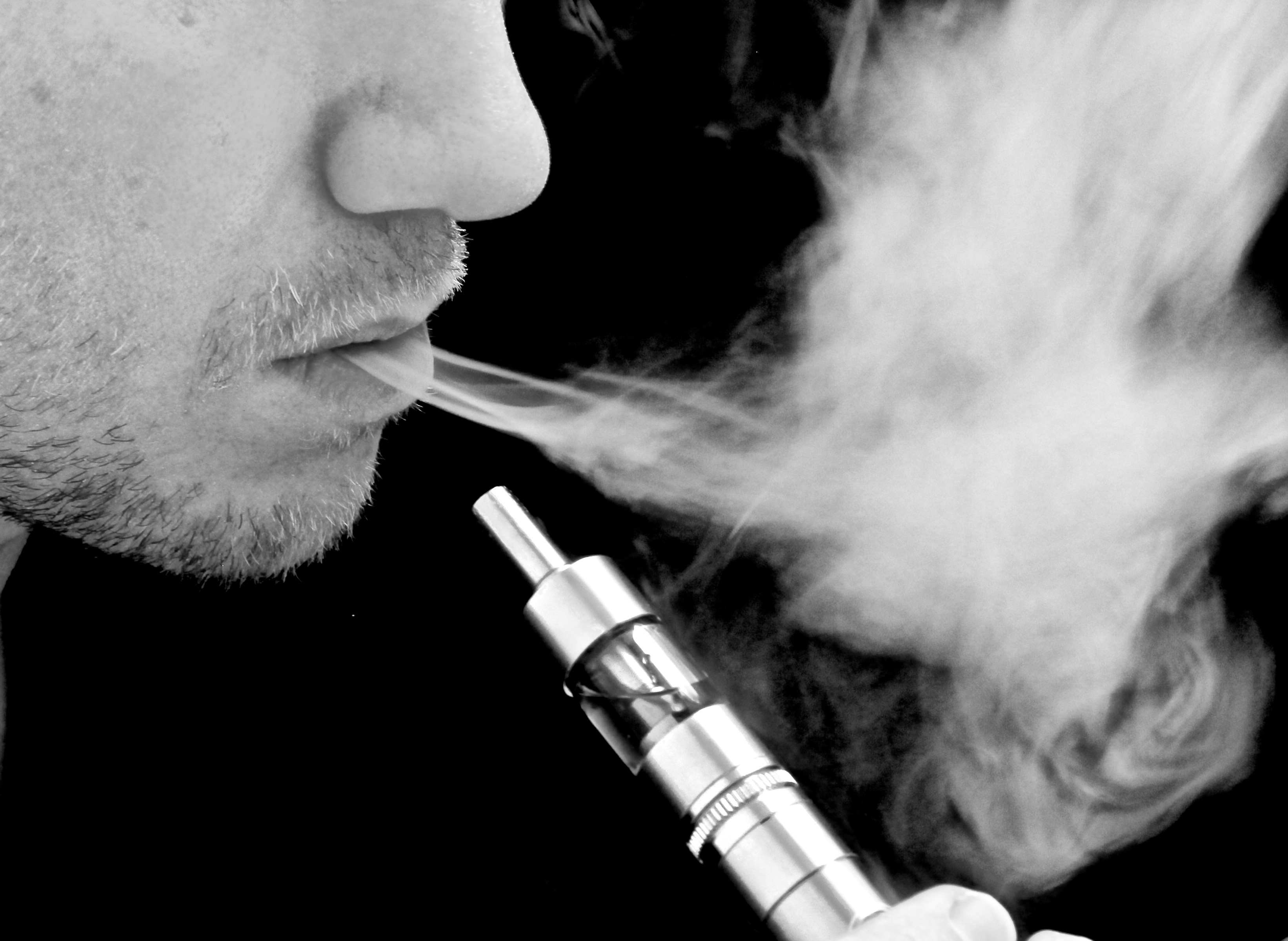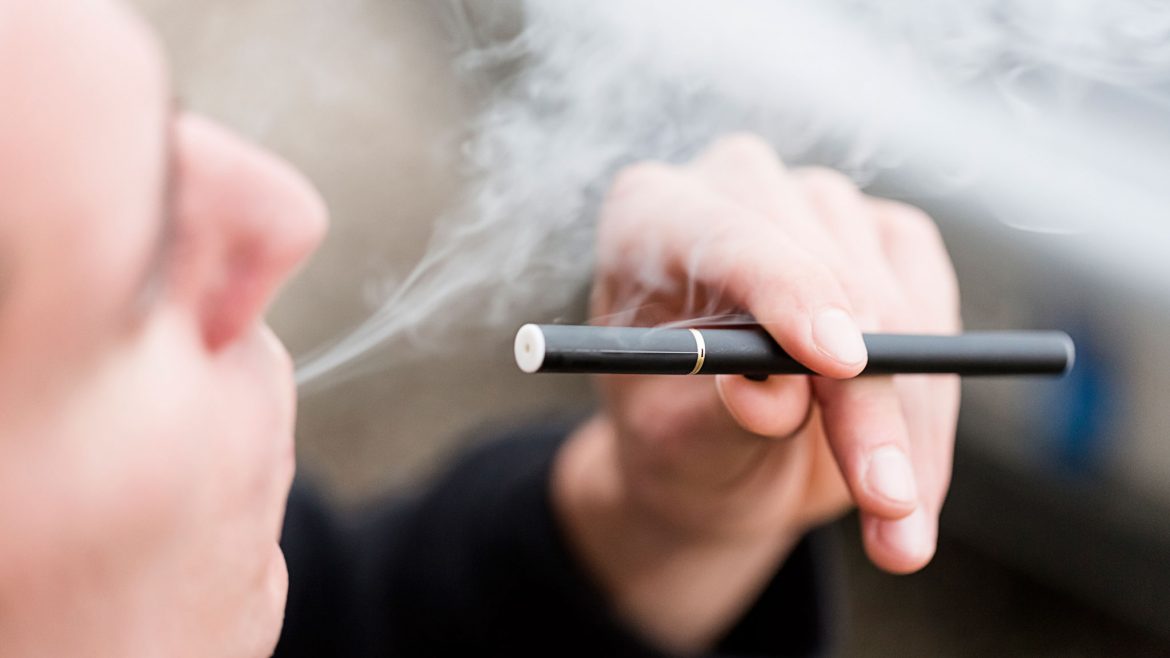Health News – The tobacco industry has been forced to fess up about the dangers of smoking by slapping grisly warnings on cigarette packs, but it hasn’t yet been cornered into giving such disclaimers on e-cigarettes and other vaping products. Mounting research and medical expertise indicates it’s high time these items were more strictly regulated. More importantly, people need to know just how potentially harmful vaping can be. Not only are e-cigarettes assuredly not the healthy alternative to smoking that we once thought; new research shows they may hold their own set of health risks.
The study, conducted by UNC School of Medicine and published in the American Thoracic Society’s American Journal of Respiratory and Critical Care Medicine, found that not only do e-cigarettes trigger the same potentially deadly immune responses that normal cigarettes do; they spur unique immune responses, too.
THE IMMUNE SYSTEM IS POISED TO ATTACK
It comes down to how our bodies process foreign substances. Basically, as Dr. Pushan Jani a pulmonologist at Memorial Hermann-Texas Medical Center and UTHealth who explains, when our lungs sense something not quite right is going on, our immune system rushes in to attack.
“The effect of the smoke from a cigarette irritates your airway, causing it to produce its own markers that invite your body’s immune systems cells which identify that signal as a potential threat to your body,” says Dr. Jani. “Once you have your immune system cells come to the lungs they will attack that area thinking it needs to be destroyed. Over time, that process can destroy your lung, which is when you develop lung diseases.”
 The problem with e-cigarettes is that evidently, they signal the same potentially harmful response from our immune system upon inhalation. When the smoke-like or vaporous substance enters our lungs, the body only recognizes that it is something foreign and poses to strike. This reaction can happen “even if you’re smoking just pure water vapor with no nicotine,” says Jani.
The problem with e-cigarettes is that evidently, they signal the same potentially harmful response from our immune system upon inhalation. When the smoke-like or vaporous substance enters our lungs, the body only recognizes that it is something foreign and poses to strike. This reaction can happen “even if you’re smoking just pure water vapor with no nicotine,” says Jani.
Neither Dr. Jani nor Dr. Cedric “Jamie“ Rutland, a pulmonary and critical care physician and assistant clinical professor at University of California at Riverside School of Medicine finds this news to be terribly surprising. It’s simply the nature of the immune system when faced with inflammation.
“Common sense would tell you [that vaping] leads to inflammation within the lung,” says Dr. Rutland, while Dr. Jani underscores his opinion that no inhalational product can be guaranteed safe.
WHAT’S IN THESE E-CIGS, ANYWAY? NOTHING GOOD
Also impossible to guarantee as safe are the chemicals that are in e-cigarettes.
“There are a number of harmful chemicals in the liquid,” says Rutland. “First off we have to understand that e-cigs produce an aerosol by heating a liquid that contains a solvent. The liquid and the solvent can both be harmful. Also because it gets heated, metals are involved as well. One of the liquids is propylene glycol which when heated (as it is in ecigs) becomes propylene oxide, a 2B carcinogen (which causes cancer). Another liquid is acrolein, which irritates the upper respiratory tract and increases airway resistance causing asthma. One of the metals used to heat the liquid is tin, which is cytotoxic to lung cells (it kills them). These metal nano particles can deposit in the lung (alveolar sacs) leading to toxicity and can enter the blood stream as well.”
But wait, there’s more. The flavoring that is such a common selling point could also be wreaking havoc on our body.
“The flavoring industry is huge and these are chemicals that are known to have reasonable safety when eaten and exposed to the GI tract, but the lungs are very different,” says Dr. Robert Jackler, chair of otolaryngology and a professor of otorhinolaryngology at Stanford. “We know in certain industrial settings where people are producing them, they’re quite dangerous to breathe in.”
VAPING GETS ‘EM WHILE THEY’RE YOUNG
But unknown health risks aren’t the only reason Dr. Jackler takes issue with the flavoring of e-cigarettes, he’s also troubled because he understands that part of the tobacco industry’s purpose in advertising fun flavors is to draw in young people. E-cigarette usage has been increasing among teens over the past five years, and flavoring is a huge appeal, with a 2016 study finding that some adolescents perceive the fruit flavored e-cigarettes to be less harmful than those that are tobacco-flavored.
“The tobacco industry wants people to start young and knows that what really attracts them are sweet and fruity flavors,” says Jackler. “If all that were available was bitter tobacco, that could be revolting.”
Research also suggests that e-cigarettes can be a kind of gateway drug to real cigarettes, with a new study published in the Canadian Medical Association Journal finding that kids who get into vaping are more likely to get hooked on real cigarettes in the next year.
The American Lung Association (ALA) has been keeping a close eye on the teenage attraction to vaping and is campaigning for the same federal regulations for e-cigarettes that exist for other tobacco products.
“We’re trying hard to encourage the FDA to promulgate regulations of vaping,” says Norman H. Edelman senior scientific advisor at the ALA. “Right now it’s all local jurisdiction.”
THERE ARE HEALTHIER WAYS TO QUIT CIGARETTES
It’s pretty ironic that we may have to start teaching teens how to quit or avoid e-cigarettes given that the initial marketing mission behind e-cigs was to lure those who were trying to quit real cigarettes.
“E-cigarettes were created to help people stop smoking,” says VJ Sleight, a health educator and the author of How To Win At Quitting Smoking”, noting that smokers embraced them because the act of vaping “is closer to smoking than any of the medicinal nicotine products and has the same behavior.”
Also ironic: what we get addicted to (the nicotine) technically isn’t the most harmful element of cigarettes or e-cigarettes, it’s all that comes with it: the chemicals, the heat, the hit to our throat and so on. This is why doctors may recommend  nicotine lozenges or patches to people who are trying to quit. Nicotine certainly is not healthy and can have serious side effects, but it typically isn’t deadly when used in small, responsible ways for a short period of time.
nicotine lozenges or patches to people who are trying to quit. Nicotine certainly is not healthy and can have serious side effects, but it typically isn’t deadly when used in small, responsible ways for a short period of time.
“You can use nicotine replacement therapy (gum, patches, lozenges) because nicotine isn’t extremely harmful when the doses are calculated and monitored,” says Dr. Rutland, noting that some drugs including bupropion and Chantix can also help.
And of course, there are also more elaborate treatment programs for quitting. Seventy-year-old Herbert Kenyon in Keller, Texas quit credits The Lung Institute for getting him off of cigarettes (and then e-cigarettes). After 52 years of smoking a pack a day, he had only a 15 percent lung capacity and required an oxygen tank to get through the day. Three years smoke-free and he’s got an oxygen level of 47 percent.
TIME WILL TELL MORE, BUT WHY WAIT?
Kenyon now deeply frowns upon how e-cigarettes are promoted as aides to help with quitting smoking, repeating his doctor’s advice that “anything foreign in the lungs is bad.” And certainly no responsible doctor would straight up recommend e-cigarettes to their patients. But there are still many unknowns about vaping, and some medical professionals argue that we still can’t make the final call that e-cigarettes are as bad for you as regular cigarettes.
“The study [explored here] shows that there may be a previously unknown harm to e-cigarettes, but the balance of evidence still shows e-cigarettes are less damaging to health than smoked tobacco cigarettes,” says Dr. Keith Humphreys, a psychiatrist at Stanford Health Care. “Although the reputation of e-cigarettes as harmless is not warranted and is a product of industry hype, they are less deadly than smoked cigarettes which after all will kill over 450,000 Americans this year.”
Though Dr. Jani is firmly anti-vaping, he admits that it’s “still too early to say how many people smoking e-cigarettes will actually develop problems as a result.” Dr. Jackler agrees, adding that while we can make predictions, “only time will tell.”
The question now for vaping fans is, do you really want to wait to know for sure if something is going to cause cancer or another disease? Or do you want to take the data that is available now and make the safe bet that even if this stuff isn’t killing us, it certainly can’t be doing us any good. It’s at least something to ponder, as is the next night out the hookah bar.
“One hookah session has been shown to be equivalent to smoking a whole pack of cigarettes,” says the ALI’s Edelman. “Amazing how people can get hooked on things that are not good for them.”
by Nicole Spector, NBC News

